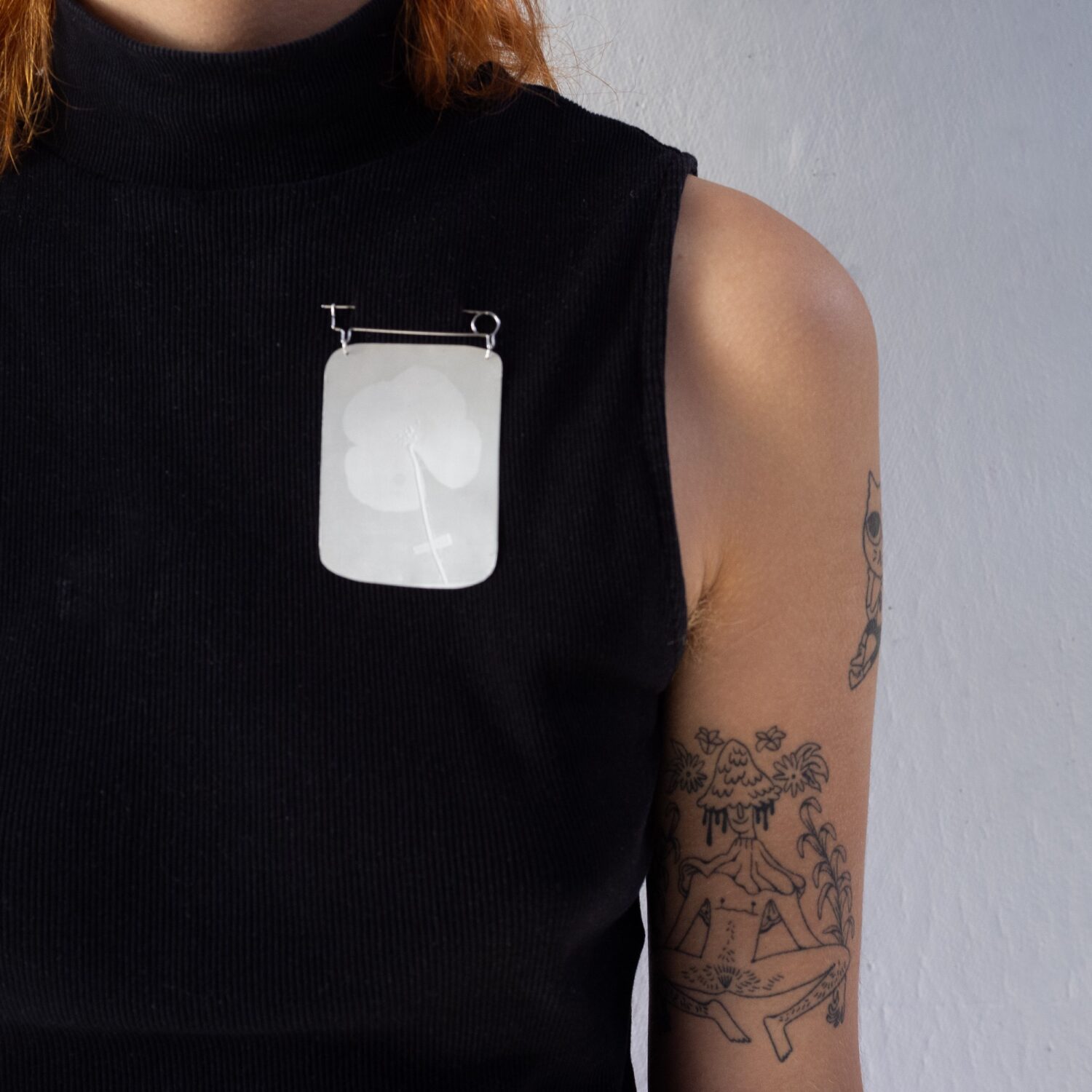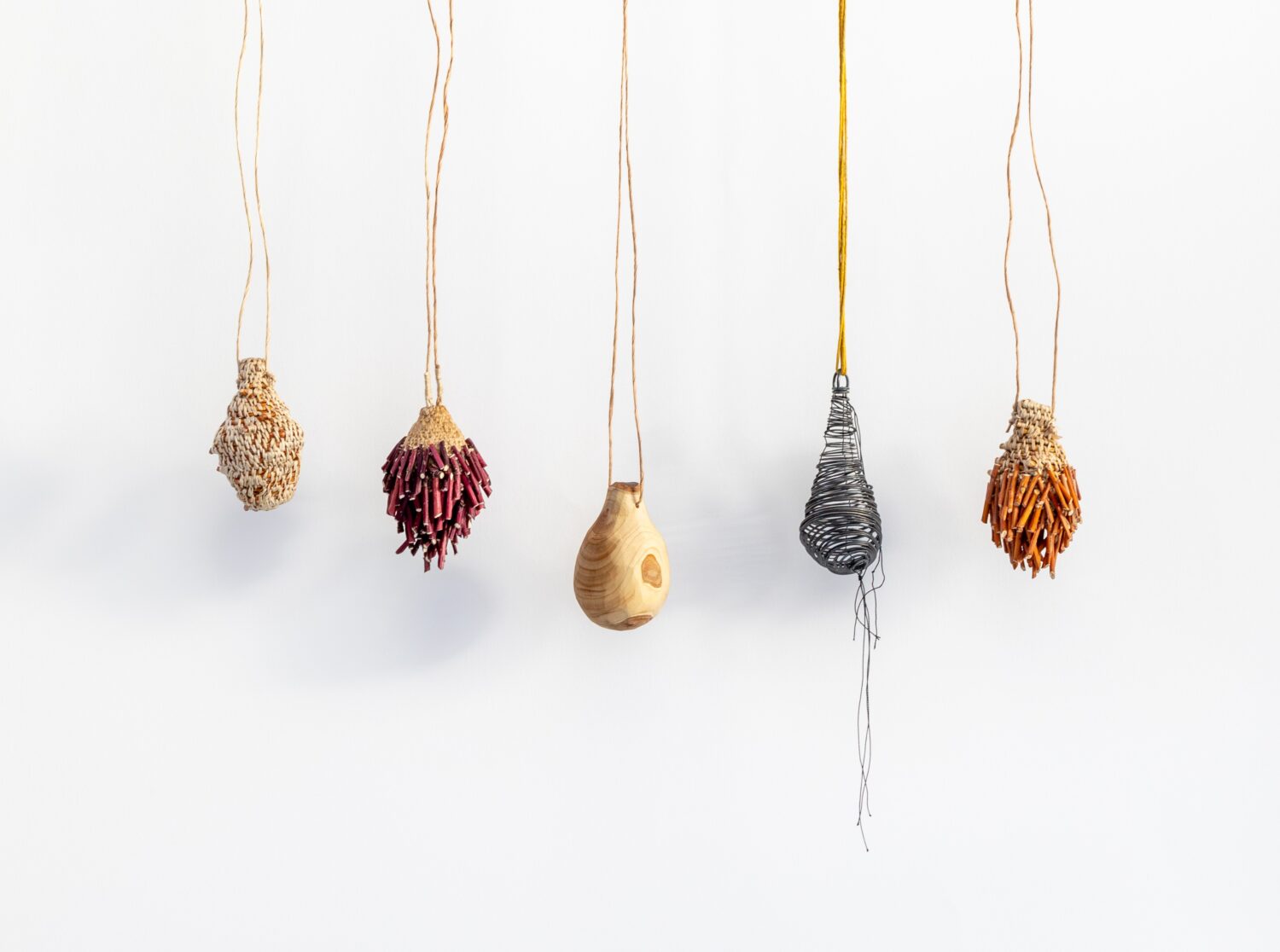How do you view the development of Danish jewelry art since the closure of the Institute for Precious Metals in 2016?
Josephine Winther: “There is obviously a vacuum. The jewelry field lacks the enthusiasm and energy that comes with a new group every year, passionate about jewelry as an idea and a medium for expression. And the recognition that there is an institution embracing it. That is missing.
In that way, the institute has been an important place for immersion. It has been characterized by being a place with artistic understanding and artistic space. That is sorely missing.
The Academy of Fine Arts in Munich – which is an institution in jewelry art – there you have 5 years for immersion in an environment. Art is used as a legal framework, whereas design school thinking must consider functionality on many different levels.
It would be fantastic to have a place like the State Workshops for Art with room for immersion and analog craftsmanship. In the name of sustainability. A place dedicated to jewelry, where you learn to take care of the tools. It’s not just about learning to work with materials, but learning which tools suit the expression you want and the materials you want to use. From my time as a teacher at the Design School Kolding, I know there is a lot of wasted tools. There is not enough time for students to truly understand the craftsmanship.
I have been in Kolding, investing my efforts in building the Accessory program since 2014, and my focus was largely on jewelry, but as in many contexts, things must align. The AC program has a broad mission, and one cannot immerse oneself in jewelry to the extent I desired. At the same time, it is an education aimed at training more generic designers, who, in turn, can enter various contexts and know a lot about sustainable business practices, collaboration with different partners, social design, critical design, and much more.
Here at the college (in Holbæk), it is clear that students want to use their hands. It provides a sense of calm, and the work anchors itself in the body. It is an important way of thinking. If you are going to create good art, you need to immerse yourself and be present with what is.
There is a bodily benefit in doing something again and again. I have been an apprentice, where you have the time and opportunity to practice techniques repeatedly until the body remembers. Not everyone can or wants to do that, but it is important to pass it on as an option for future generations.
This task cannot be solved by Kolding alone. In Kolding, the mission is very broad, and there is not enough time. There is not enough time to understand the artistic premise.”

Where should aspiring Danish jewelry artists look for qualified education?
Josephine Winther: “There are several places depending on preferences and focus; some are more interested in craftsmanship, while others want to unfold more artistically. Most places offer a bachelor’s degree, and in some cases, you need a bachelor’s degree to get in, for example, the Royal College of Art in London. Many places also provide opportunities to work on social and critical design.
GSMA in Glasgow covers both aspects, with excellent workshops and a high level of artistic freedom.
Birmingham, Central Saint Martin, PXL-MAD Hasselt in Belgium, Pfortzheim in Germany, Idar Oberstein in Germany, Alchemia Firenze, HDK-Valand in Sweden, Kunstfack in Sweden, and many more really good schools can all be found in the link below.
https://klimt02.net/institutions/schools
https://artjewelryforum.org/schools/
The Academy of Fine Arts in Munich has set the bar in many ways when it comes to the art of jewelry.
I have studied at the Royal College of Art. It’s inspiring to be part of an artistic environment where what you create is understood and recognized. There’s a sense of security in engaging with something that also makes sense to others.
It would be wonderful if jewellery could be considered an art form. It’s fantastic that in Denmark, we have goldsmiths who take care of private events – the relational side. They connect people and create bonds to events and places. In reality, this aspect is the foundation for the thinking one can have about the artistic piece of jewellery.”

Which trends or movements do you see in international jewellery art?
Josephine Winther: “Those working internationally tap into society’s agendas. It’s an artistic maneuver. The body is the premise for jewellery art. There’s also the mind and functionality that one can play against. Many significant topics are explored, such as LGBT, climate, sustainability, etc., by many jewellery artists.
At the same time, a substantial part of jewellery art is fantastical with gold and precious metals—materials that have a dark history from a sustainable perspective. It’s a bit of a jungle to navigate to do the right thing. But one has to try.
Internationally, there is much more academic writing on jewellery art. There are some fine platforms, and some universities contribute with text and knowledge about jewellery art.” (Journal of Jewellery Research)
What has art done to the concept of jewellery?
Josephine Winther: “Art has liberated jewellery in terms of both the monetary value concept and the power associated with materials traditionally used in jewellery.
Considering the field of jewellery as art has freed up material choices, design, and placed the body at the center. The entire body. Jewellery can be a sensory object, for the mind, or encompass functionality. This has come with art.”
What future aspirations do you have for Danish jewellery art – freely expressing your thoughts?
Josephine Winther: “That it is taken seriously. That it is a discipline contributing to artistically interpreting the world, just like other disciplines. Throughout history, jewellery has been instrumental in grounding us in the world, guiding us through life’s transitions from birth to death. I would wish for it to be recognized by museums and educational institutions.
Ideally, with an education that focuses on providing a space for jewellery. A place with an inspiring environment.”
Bio
Josephine Winther, a goldsmith trained under Klaus Kromann and holding an MA in Metalwork and Jewellery from the Royal College of Art, London. She is an independent artist, educator, and mentor. Her focus areas include art jewellery and social design, where she imparts her knowledge as an instructor.
Josephine has received accolades such as the Sct. Loyé Prize and the Biennale Prize 2013 for the Makers Move project, a jewellery street project developed in collaboration with Gitte Nygaard.
Jewellery possesses poetic and relational qualities. It serves as a reminder of people, places, and days in our lives, gently connecting us with each other across a range of human contexts. Josephine Winther finds inspiration in the form of the body and the expansiveness of the mind, which continually propels her to study, create, and discuss jewellery and other objects in relation to the body.
Theme: Contemporary Jewellery Art
Can Danish jewellery art renew itself when the artistic education has been shut down and the field does not have a dedicated professional museum in Denmark?
What traditions and stories does Danish jewellery art build on? How does the industry relate to contemporary demands for sustainability and new consumer patterns? Does jewellery still have a justification in a world of abundance, climate anxiety, and malaise?
Much suggests that Danish jewellery art finds its own ways in spite of everything. Read theme
Receive a newsletter
Sign up for Formkraft’s newsletter and receive information about new articles as well as tips on relevant conferences and books. Sign up here.


